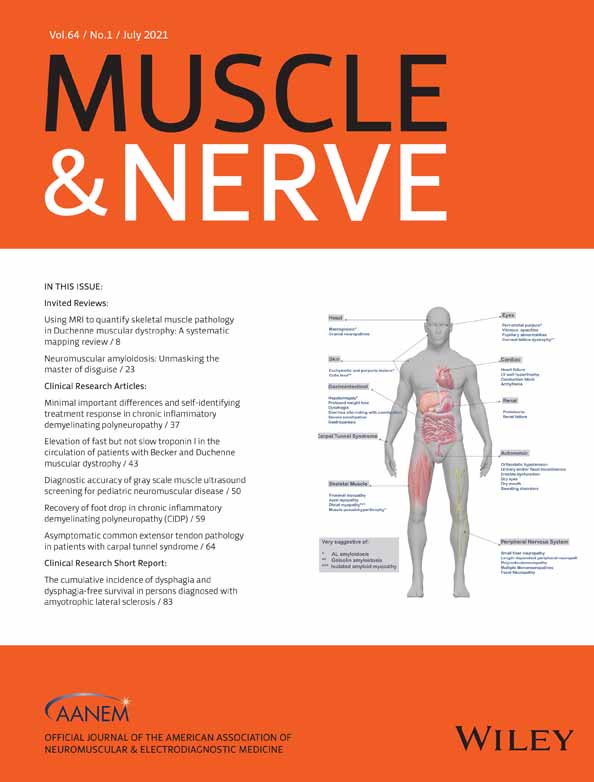Buprenorphine may be effective for treatment of paramyotonia congenita
Sabrina Ravaglia and Lorenzo Maggi contributed equally to this study.
Abstract
Introduction/Aims
Paramyotonia congenita (PMC) is a skeletal muscle sodium channelopathy characterized by paradoxical myotonia, cold sensitivity, and exercise/cold-induced paralysis. Treatment with sodium-channel–blocking antiarrhythmic agents may expose patients to a risk of arrhythmia or may be poorly tolerated or ineffective. In this study we explored the effectiveness of non-antiarrhythmic sodium-channel blockers in two patients with PMC.
Methods
Earlier treatment with mexiletine was discontinued for gastrointestinal side effects in one of the patients and lack of clinical benefit in the other. One patient received lacosamide, ranolazine, and buprenorphine, and the other was given buprenorphine only. Drug efficacy was assessed by clinical scores, timed tests, and by long and short exercise tests.
Results
In both patients, buprenorphine improved pain scores by at least 50%, stiffness and weakness levels, and handgrip/eyelid-opening times. The fall in compound muscle action potential (CMAP) during short exercise normalized in both patients at baseline, and improved after cooling. During long exercise, one patient showed an earlier recovery of CMAP, and the other patient had a less severe decrease (<60%). With buprenorphine, the fall in CMAP induced by cooling normalized in one patient (from −72% to −4%) and improved (from −49% to −37%) in the other patient.
Discussion
Buprenorphine showed promising results for the treatment of exercise-induced paralysis and cold intolerance in the two patients assessed. The exercise test may be useful for quantitative assessment of treatment response. Further studies on a larger number of patients, under carefully controlled conditions, should be considered to address the effectiveness and long-term tolerability of this therapeutic option.
CONFLICT OF INTEREST
The authors declare no potential conflicts of interest.
Open Research
DATA AVAILABILITY STATEMENT
The data that support the findings of this study are available from the corresponding author upon request




